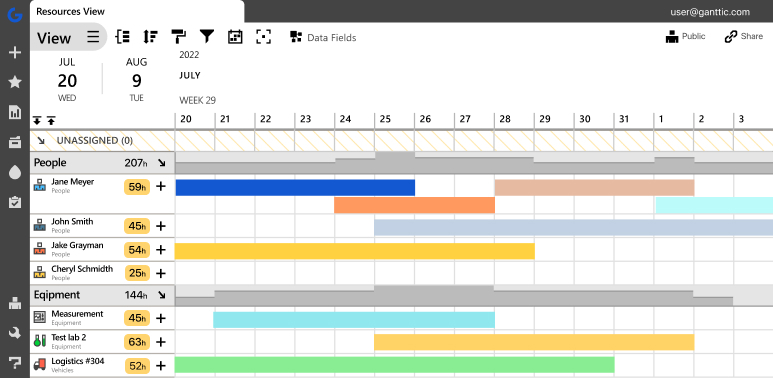Marketing campaigns are intricate, fast-moving, and require seamless collaboration across multiple teams. Without a structured approach, projects can quickly spiral out of control—deadlines slip, budgets balloon, and clients get frustrated. This is where marketing project management steps in.
Marketing project management is the discipline of planning, executing, and monitoring marketing initiatives efficiently. Whether you’re coordinating a multi-channel advertising campaign or launching a new brand, a robust project management strategy ensures smooth execution, clear communication, and optimal results.
Let’s explore the best practices, tools, and methodologies to elevate your marketing project management game.
Why Marketing Project Management Matters
Effective project management is the backbone of successful marketing teams. Without it, even the most creative and innovative ideas can fail due to poor execution. Here’s why it matters:
Better resource allocation
Assigning the right people to the right tasks not only avoids burnout and employee overloading, but also maximizes efficiency. Notably, organizations that implement project management practices waste 28 times less money compared to those that don’t.
Clear communication
Keeping stakeholders, clients, and team members informed throughout the project lifecycle is crucial. Poor communication is responsible for 30% of project failures, underscoring the importance of structured communication channels.
Consistent deadlines
Ensuring deliverables stay on track helps avoid last-minute scrambles. However, only 34% of companies complete projects on time, highlighting the need for robust project management to improve deadline adherence.
Measurable success
Tracking KPIs and analyzing performance are essential for optimizing future campaigns. Organizations that prioritize project management report a 38% improvement in customer satisfaction, demonstrating the tangible benefits of these practices.
For marketing agencies, mastering project management is essential to delivering high-quality work while keeping clients happy and coming back for more.
Key Challenges in Marketing Project Management
Marketing teams face unique project management challenges that differ from those in other industries. Here are some common roadblocks:
Multiple moving parts
Marketing campaigns involve various teams (designers, copywriters, strategists, social media managers, etc.), making coordination complex. Ensuring seamless collaboration planning across these departments requires structured workflows and clear communication channels.
Tip: Tools that provide a visual resource planning interface helps teams track all moving parts in real time. Drag-and-drop scheduling allows for easy adjustments, ensuring that tasks are properly coordinated across departments.
Tight deadlines
Clients expect quick turnarounds, often with last-minute changes. Without a centralized system to track progress, marketing teams may struggle to meet deadlines, leading to rushed deliverables and potential quality issues. Implementing project management software helps teams prioritize urgent tasks while maintaining high standards.
Tip: Dynamic timelines and Gantt chart views help marketing managers monitor project progress and allocate resources to meet deadlines without overburdening the team.
Changing priorities
Marketing campaigns often evolve due to external factors like market trends, competitor activity, or stakeholder feedback. Teams need to remain agile and adjust their strategies while keeping projects aligned with business goals. Adopting an iterative project management approach, like Agile, helps teams pivot without losing momentum.
Tip: Tools with real-time updates and flexible scheduling, enables marketing teams to shift priorities effortlessly while keeping all stakeholders in sync.
Collaboration across departments
Overloading team members can lead to burnout, while underutilizing resources results in inefficiencies. Without proper resource planning, marketing teams may find themselves either overwhelmed or underproductive. Using tools like Ganttic ensures that workloads are balanced and that team members are assigned tasks based on their availability and expertise.
To overcome these challenges, marketing teams need the right marketing project management tools and a structured workflow. Let’s check out some of the top ones next.
Best Project Management Tools for Marketing Teams
Using the right tools makes marketing project management more efficient. Here are some of the best platforms marketers can use to keep projects on track:
1. Ganttic – Advanced Resource Planning

Ganttic is a visual resource management tool that helps marketing teams plan and allocate resources effectively. Instead of juggling multiple projects in spreadsheets, Ganttic provides a centralized view of all campaigns, ensuring teams aren’t overloaded and deadlines are met.
Key Features:
- Drag-and-drop scheduling for quick adjustments
- Real-time collaboration with team members
- Custom reports to analyze performance
- High-level resource planning to optimize team capacity
2. Trello – Simple Kanban Project Management
Trello is a user-friendly task management tool that helps marketing teams organize workflows using Kanban boards. It’s perfect for tracking tasks, brainstorming ideas, and managing content calendars.
Best For:
- Content marketing teams managing blog posts, social media, and email campaigns
- Visual organization of projects and task assignments
3. Asana – Task and Workflow Management
Asana is a versatile project management platform that allows marketing teams to structure workflows, track deadlines, and assign responsibilities.
Standout Features:
- Timeline view for campaign tracking
- Task dependencies to manage complex projects
- Goal setting for long-term marketing strategies
4. Monday.com – All-in-One Marketing Planning
Monday.com is ideal for marketing project management for agencies that need a comprehensive platform to handle multiple client projects simultaneously.
Features Marketers Love:
- Custom dashboards for campaign analytics
- Time tracking for billable hours
- Automated workflows to eliminate repetitive tasks
Marketing Project Management Best Practices
To ensure marketing projects run smoothly, follow these proven best practices:
1. Set Clear Objectives and KPIs
Every marketing project should start with well-defined goals. Use SMART goals (Specific, Measurable, Achievable, Relevant, Time-bound) to ensure clarity.
Example: Instead of “increase website traffic,” set a goal like “increase organic website traffic by 20% within three months.”
2. Planning and Scheduling
Develop a detailed project plan, outlining deliverables, timelines, and resource allocation. Use marketing calendars and Gantt charts to visualize workflows and dependencies.
Tip: If you’re used to using online Calendars such as Google or Outlook, you can also sync these with a broader project management tool. Helping managers get an overview, while other employees’ calendars are automatically updated with new priorities.
3. Assign Roles and Responsibilities
When was the last time you reconsidered your teams current workflows and processes? If it’s been awhile, you should. After all, your processes and workflows are the maps you follow to achieve your content marketing goals. If they no longer accomplish what you want, are outdated, or inefficient, it’s time to make changes.
A content marketing team may consist of writers, editors, keyword and SEO experts, marketing analysts, social media managers, project leaders, and more. In many cases, one person will find themselves taking on more than one role.
Avoid confusion by clearly defining who is responsible. Assign responsibilities clearly using a RACI matrix (Responsible, Accountable, Consulted, Informed). Utilize collaboration tools to streamline communication.
Tip: If you aren’t familiar with matrix planning you can read more here.
Real Life Case Study
It’s common for marketing agencies and others in the creative field to bring in freelancers in addition to full time staff. This can help with specific projects and even out the workload.
At Pegasus, a global communication agency, they learned how to streamline this process with Ganttic. Adding freelancers to their plans helped them plan out capacity better in the short and long-term. And they could figure out if more freelancers needed to be brought on for certain projects. Plus, with the ability to share plans with everyone for no extra costs, even if it’s only a limited-time partnership. All of this allowed Pegasus to make sure that not only were they meeting capacity, but they were scheduling the right people with the right skill sets.
Read more about how resource management tools can help creative and marketing teams get their jobs done, no matter how your team structure.
4. Execution and Monitoring
Marketing teams can benefit from agile project management frameworks such as Scrum or Kanban. Agile encourages flexibility, frequent check-ins, and iterative improvements.
In agile project management, many teams work with limits on works in progress (WIP). Essentially, they’ve limited the amount of work that can be included in each stage of the workflow because they’ve realized two things. Too much work in progress can cause inefficiencies.
It also makes it difficult to pinpoint other inefficiencies. Even if you don’t fully adopt agile methods in your content marketing strategy, you should certainly consider putting this one into place. Process inefficiencies aren’t always obvious, but process mining software can help uncover them. By analyzing actual workflow data, it identifies bottlenecks and areas where multitasking may be reducing efficiency.
5. Track and Optimize Performance
Use analytics tools to measure campaign performance against KPIs. Regularly review what worked, what didn’t, and adjust strategies accordingly.
For example, if you want to boost your SEO operations it’s also beneficial to provide your team with automated software for link building. Automated tools enhance time efficiency by streamlining outreach processes, allowing your team to focus on strategy rather than manual tasks. They also enable scalability, making it easier to reach a larger number of potential partners while maintaining consistent outreach. Furthermore, these tools provide data-driven insights, helping to refine strategies based on performance analytics and allow for targeted campaigns that focus on high-quality, relevant websites.
The Future of Marketing Project Management
Marketing project management will continue evolving, with new technologies and AI-driven automation streamlining processes. Here’s what to expect:
- AI-powered insights – Predictive analytics will help marketing teams forecast campaign success.
- Increased automation – Tools like Zapier and APIs will reduce manual work.
- Cross-functional collaboration – Marketing teams will integrate more closely with sales and product development for cohesive strategies.
Conclusion: Take Your Marketing Project Management to the Next Level

Managing marketing projects doesn’t have to be chaotic. With the right tools, structured workflows, and strategic planning, marketing teams can execute campaigns efficiently and deliver top-notch results.
Looking for a better way to manage your marketing resources? Try Ganttic today and take control of your marketing project management like never before.
Give it a go with a free 14 day trial of Ganttic and see the benefits of adding a resource planner to your marketing team’s workflow.